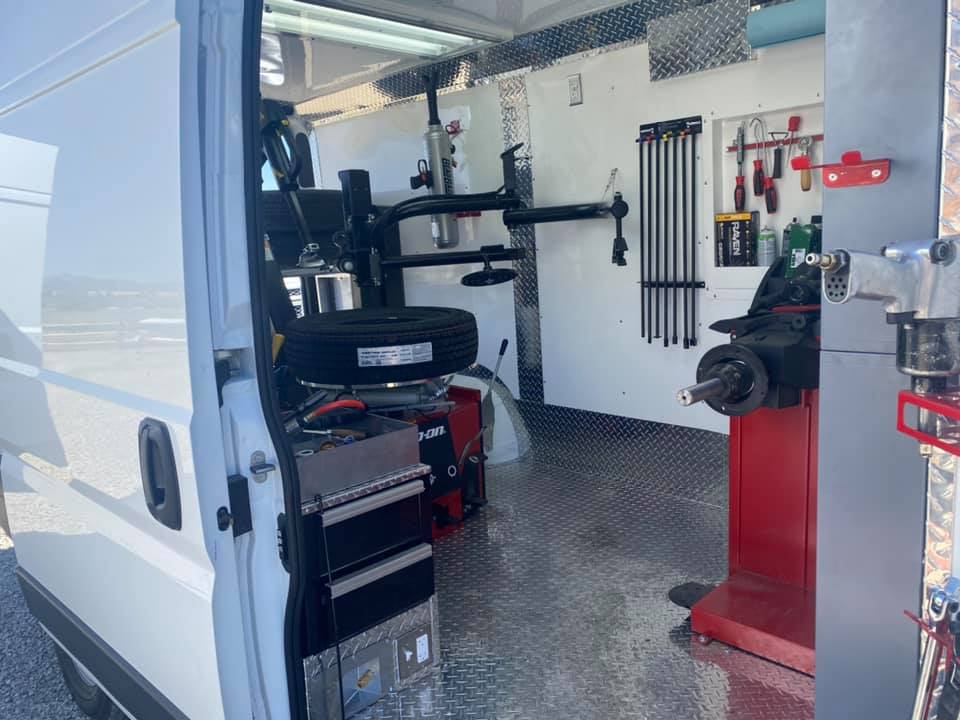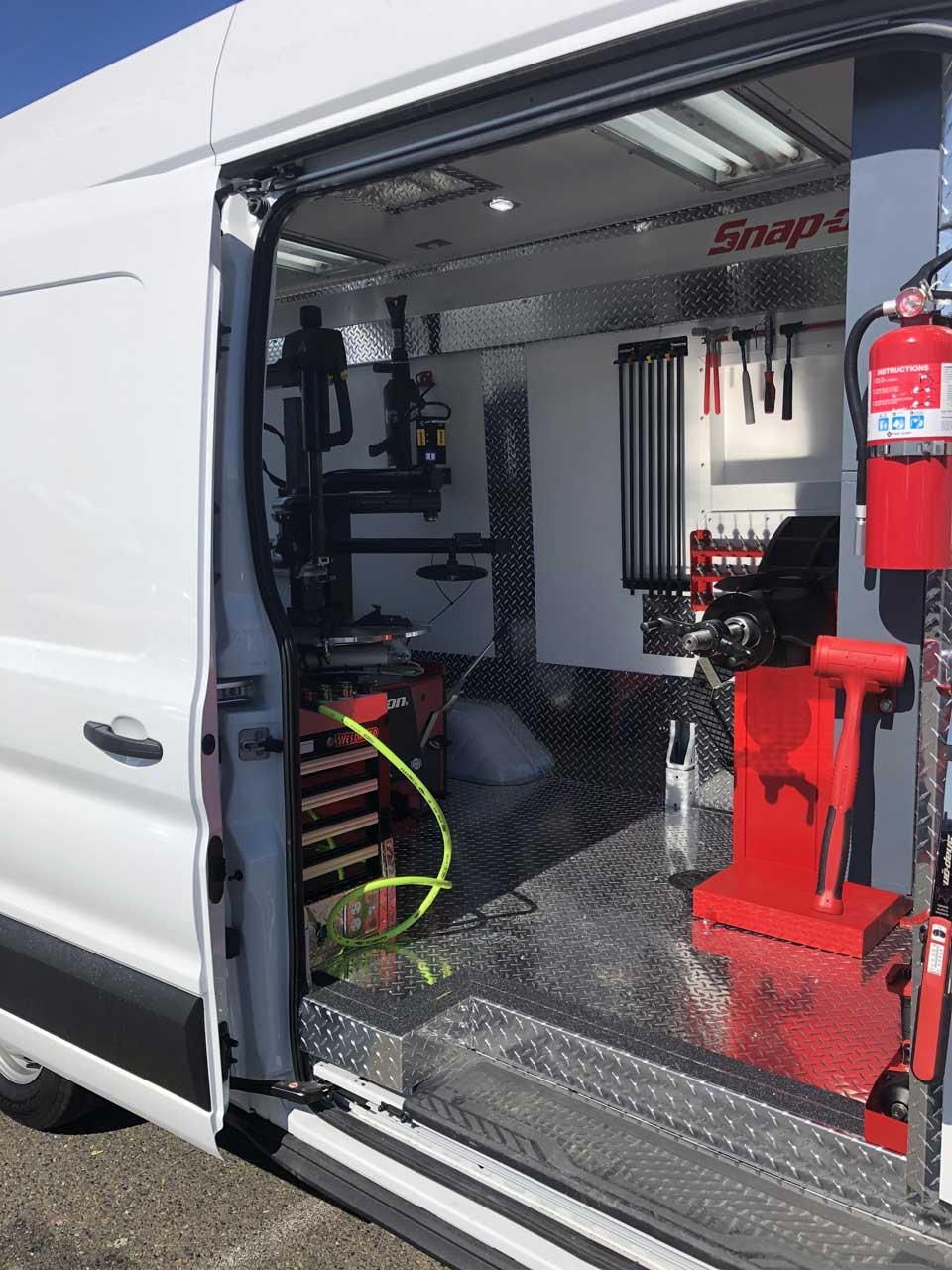Emergency Mobile Tire Service Available in Las Vegas
Emergency Mobile Tire Service Available in Las Vegas
Blog Article
Tire Solution: Proven Techniques for Optimum Tire Maintenance and Care
From making sure proper tire stress to regular turning and alignment, there are tested methods that can significantly expand the life expectancy of your tires and boost general driving experience. Allow's delve into the globe of tire solution and find the secrets to keeping your tires in top-notch shape for the lengthy haul - Mobile Tire Repair Las Vegas.
Value of Tire Stress
Sufficient tire stress promotes much better gas effectiveness, as under-inflated tires can lead to raised rolling resistance, triggering the engine to work tougher and consume even more fuel. Correct tire pressure makes certain even walk wear, improving tire longevity and conserving cash in the lengthy run by postponing the requirement for early replacements. On a regular basis changing and examining tire stress, specifically previously lengthy trips, is a simple yet reliable means to boost vehicle performance, prolong tire life expectancy, and prioritize security on the roadway.
Tire Turning Guidelines
When thinking about tire turning standards, it is vital to understand the significance of this maintenance task in making best use of tire life-span and keeping optimum lorry efficiency. Tire rotation includes altering the setting of each tire on an automobile to make sure even walk wear. Front tires have a tendency to put on faster than rear tires due to guiding forces, making regular turning crucial for well balanced wear patterns. The advised turning pattern varies depending on whether a vehicle is front-wheel, rear-wheel, all-wheel, or four-wheel drive. Normally, tires must be rotated every 5,000 to 7,500 miles, or as advised in the lorry handbook. Overlooking tire rotation can lead to uneven wear, affecting handling, grip, and possibly compromising car safety. By adhering to proper turning guidelines, vehicle drivers can extend the life of their tires, enhance fuel performance, and enhance overall driving experience. Normal rotation is a simple yet effective maintenance practice that contributes significantly to tire longevity and lorry performance.

Advantages of Wheel Alignment
Ensuring proper wheel alignment after tire turning is vital for preserving balanced wear patterns and making the most of vehicle performance. Wheel alignment describes the modification of the angles of the wheels to the producer's requirements. One of the vital advantages of wheel alignment is enhanced handling and guiding action. When the wheels are properly straightened, it minimizes guiding effort, making sure a smoother and extra controlled driving experience. Additionally, right wheel placement aids to prolong the lifespan of your tires. Misaligned wheels can trigger irregular tire wear, leading to premature tire substitute and increased upkeep costs.

Tire Tread Deepness Inspect
Executing a normal assessment of tire tread depth is essential for keeping secure driving conditions and prolonging the lifespan of your tires. Irregular step wear can show concerns with tire alignment, suspension, or stress, highlighting the importance of regular tread deepness checks. By including tire walk depth checks into your regular maintenance timetable, you can drive with confidence knowing that your tires are original site in top problem.
Seasonal Tire Assessment
A thorough evaluation of tire condition customized to specific climate condition is critical for maintaining optimum performance and security throughout the year. Seasonal tire evaluation is a basic aspect of tire maintenance that makes certain tires are prepared to face the obstacles posed by various climate condition. In prep work for wintertime, it is vital to check the tire pressure routinely as chilly temperature levels can cause tire stress to go down. Checking tire walk deepness is also important to make certain sufficient grip on snow and frozen roadways. Additionally, inspecting for indicators of deterioration, such as bulges or cracks, can assist protect against possible tire failures. As the seasons modification, it is essential to examine tire condition and make any type of needed changes to assure secure driving. By carrying out regular seasonal tire assessments, vehicle drivers can lengthen tire life-span, important source enhance fuel performance, and most importantly, ensure a secure driving experience in varying climate condition - Mobile Tire Repair Las Vegas.
Conclusion
To conclude, keeping appropriate tire stress, turning tires frequently, lining up wheels correctly, monitoring step depth, and performing seasonal inspections are essential practices for optimum tire care. By complying with these confirmed approaches, chauffeurs can guarantee their tires last longer, do better, and add to general automobile safety and security. It is necessary to focus on tire maintenance to prevent accidents, enhance gas efficiency, and extend the life-span of tires.
Adequate tire stress promotes much better gas performance, as under-inflated tires can go lead to enhanced rolling resistance, causing the engine to function tougher and consume more fuel.When taking into consideration tire rotation standards, it is important to comprehend the relevance of this maintenance job in maximizing tire lifespan and preserving ideal automobile efficiency. Seasonal tire assessment is a fundamental facet of tire upkeep that ensures tires are ready to deal with the challenges posed by different weather conditions. By performing regular seasonal tire inspections, vehicle drivers can lengthen tire life-span, boost gas performance, and most importantly, ensure a protected driving experience in varying weather problems.
In final thought, maintaining appropriate tire pressure, rotating tires routinely, aligning wheels correctly, checking step depth, and conducting seasonal inspections are crucial practices for optimum tire treatment.
Report this page